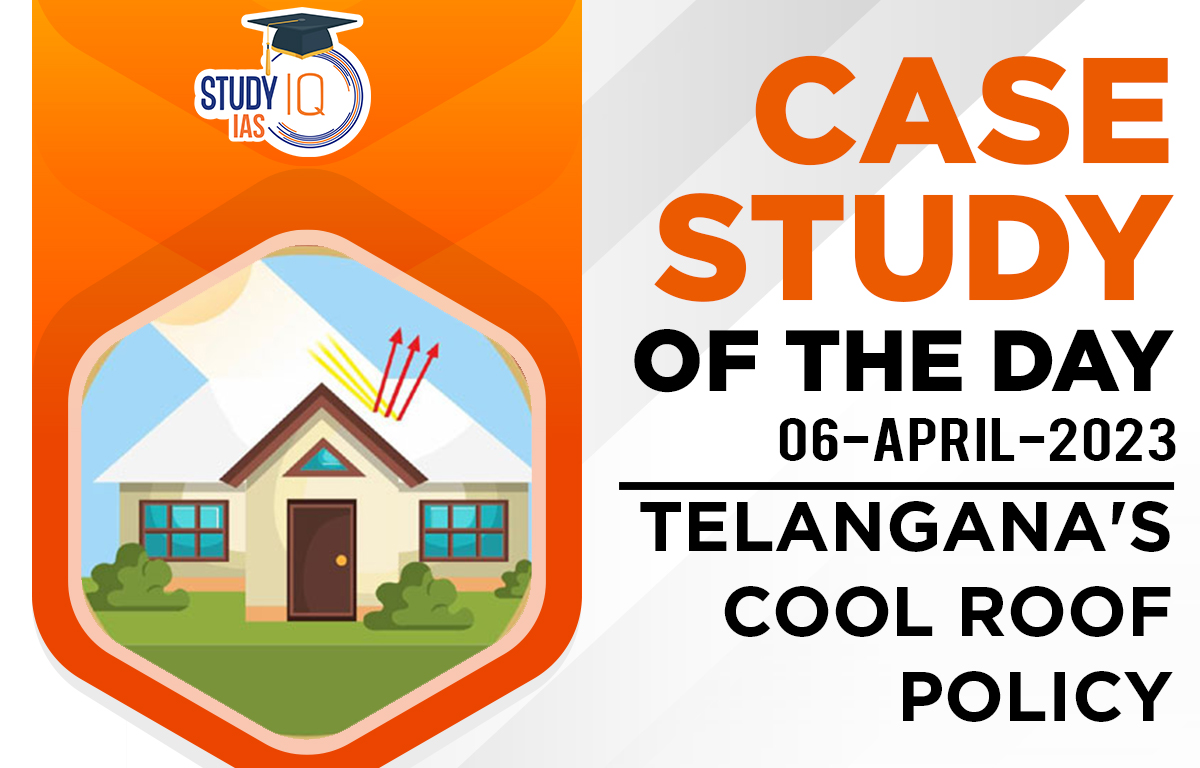Context: Telangana government has recently announced a “Cool Roof Policy” for buildings, to make them heat resilient, besides reducing the energy consumption.
About Cool Roof Policy
- The Telangana government has announced a ‘cool roof’ Policy, to make them thermally comfortable and heat resilient, besides reducing the energy consumption.
- Cool Roof
- A cool roof is designed to reflect more sunlight than a conventional roof, absorbing less solar energy.
- They have high “thermal emittance”—the ability to shed heat by giving off “thermal infrared” radiation.
- Applicability
- Independent residential and commercial buildings, besides apartments.
- Mandatory for all government, non-residential and commercial buildings irrespective of the size of the area built.
- Provisions under Policy
- Materials for covering roof:
- Roofs can be coated with material or paint having high reflectivity.
- Prefabricated materials such as poly-vinyl chloride (PVC) membranes or bitumen-based sheeting can be used to cover an existing roof in order to increase the roof surface’s solar reflectance and thermal emittance.
- Application of high albedo, ceramic mosaic tiles or shingles on top of an existing roof or to a new roof.
- Occupancy certificates are issued only after the builder complies with the policy guidelines.
- State government would also offer a special training programme for builders and all those involved in the construction industry about cool roof products and their benefits.
- Materials for covering roof:
- Expected Impacts
- Policy will go a long way in reducing the impact of heat in regions like Telangana, which record high temperatures during the summer.
- The cool-roof technology will reduce the energy consumption in the form of air-conditioners and fans to a large extent, thereby controlling the carbon-dioxide emissions.
- Decreasing roof temperature may extend roof service life.
- Help offset global warming by reflecting more sunlight to outer space.
- Reduced “urban heat island” effects. A cool roof reflects more heat, and lowers the ambient temperature of the area.
- Cool roofs decrease urban air temperatures and thus slow the formation of ground level ozone, thereby further reducing smog.


 Daily Quiz 18 April 2025
Daily Quiz 18 April 2025
 OSSC CGL Syllabus 2025 and Exam Pattern ...
OSSC CGL Syllabus 2025 and Exam Pattern ...
 AI and its Regulation in India, Limitati...
AI and its Regulation in India, Limitati...





















